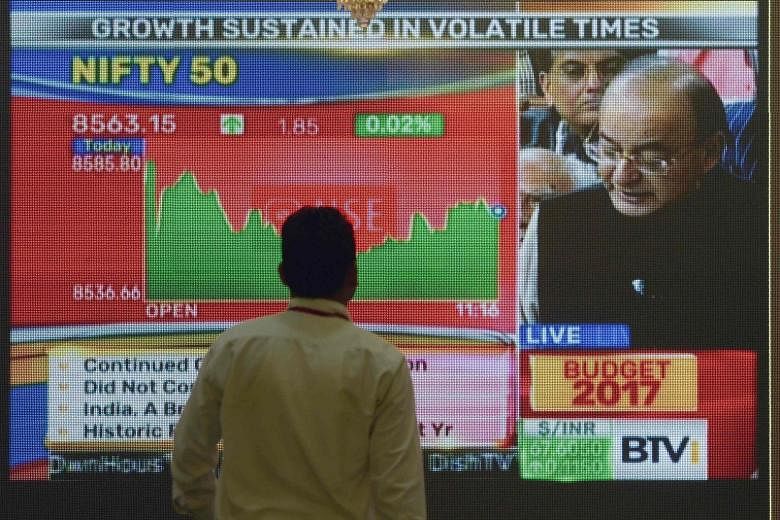With state polls ongoing, India's Finance Minister Arun Jaitley has unveiled a Budget that boosts government spending to help the poor while cutting tax rates.
The Budget unveiled yesterday represented an effort to win the support of voters by blunting the negative impact of the government's controversial move last year to get rid of black money by demonetising high-value currency, say analysts.
Said Mr Jaitley yesterday: "My approach in preparing the Budget is to spend more on rural areas, infrastructure and poverty alleviation with fiscal prudence."
Overall, the allocation of the Budget for rural, agriculture and allied areas will be raised by 24 per cent to 1.87 trillion rupees (S$39.1 billion) this year.
"This Budget is an important step towards overall development of the nation," said Prime Minister Narendra Modi. "It will create new employment opportunities, help in overall economic growth and will be complementary in raising the income of the farmers."
-
Budget highlights
-
• A 24 per cent increase in rural and farm spending
• Health spending to rise by 28 per cent
• Personal income tax for those earning between 250,000 rupees and 500,000 rupees to decrease from 10 to 5 per cent
• Small businesses with turnover of up to 500 million rupees a year will see their tax rate cut to 25 per cent from 30 per cent
• Allocation of 10 trillion rupees as credit for farmers, with interest waiver of 60 days
• Doing away with the Foreign Investment Promotion Board, which recommends foreign direct investment projects
• Individual cash donation to political parties capped at 2,000 rupees, down from 20,000 rupees
• Affordable housing given infrastructure status which would facilitate easier access to credit and cheaper loans
• Defence capital outlay pegged at 864.88 billion rupees
• Making India a global hub for electronics manufacturing
• Finishing 10 million houses for those without homes or living in mud homes
The Budget comes at a time when the ruling party is hoping to perform well in five state elections, including in the state of Uttar Pradesh, where voting will take place in several phases from this month to March.
In the Budget, Mr Jaitley allocated 3.96 trillion rupees for infrastructure, up from 2.12 trillion rupees the year before, even as he halved income tax for those at the bottom of the scale and cut corporate tax for small businesses.
Mr Rishi Sahai, managing director of investment bank Cogence Advisors, said the Budget took state elections into account, noting it tries to "create a healthy balance between industry and the poor".
In his Budget speech, Mr Jaitley sought to defend the demonetisation of 500- and 1,000-rupee notes to target the black economy and promote transparency through digital transactions.
While the move introduced last November was popular among the poor and middle class, poor implementation led to a cash crunch that brought down spending and saw many daily wage workers lose jobs in a cash-dominated economy. The worst affected were rural sectors.
In the Budget, Mr Jaitley unveiled moves to curb cash donations and ban cash payments above 300,000 rupees from April 1, as part of an anti-corruption drive.
"For many decades, tax evasion was a way of life for many. Demonetisation... seeks to create a new normal wherein the GDP will be bigger, cleaner and real," he said, adding the impact of demonetisation would not "spill over to the next year".
Demonetisation could have already affected India's economic growth for the current fiscal year, which could dip to 6.5 per cent, from 7.6 per cent previously, according to the government's economic survey.
The Budget was generally well received with industry groups calling it balanced. "Overall, the Budget builds positive sentiments among the Indian industry and overseas investors that the government will remain on the path of fiscal prudence while taking all possible measures to boost growth," said Mr Chandrajit Banerjee, director-general of the Confederation of Indian Industry.
Still, some believed the government could have done much more.
Professor Biswajit Dhar at the Centre for Economic Studies and Planning at Jawaharlal Nehru University said: "For instance, the government has increased farm credit, but what is really ailing farmers is that half their produce is rotting in fields, so you need something on agro processing and providing a front-end processing facility. It is not a bold Budget. "

